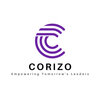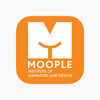Filter interviews by
Jct College Engineering Technology Senior Assistant Professor Interview Questions and Answers
8 Interview questions
Types of representation of numbers include decimal, binary, octal, and hexadecimal.
Decimal representation uses base 10 and consists of digits 0-9.
Binary representation uses base 2 and consists of digits 0 and 1.
Octal representation uses base 8 and consists of digits 0-7.
Hexadecimal representation uses base 16 and consists of digits 0-9 and A-F.
The two types of convolution with discrete time sequences are linear convolution and circular convolution.
Linear convolution involves summing the products of corresponding elements of two sequences over all possible values.
Circular convolution involves summing the products of corresponding elements of two sequences after wrapping around the end of the sequences.
Example: Linear convolution - [1, 2, 3] * [4, 5, 6] =...
Types of FFT include Cooley-Tukey, Radix-2, Radix-4, Split-Radix, Prime Factor, and Bluestein.
Cooley-Tukey: most common FFT algorithm, divides input into smaller DFTs
Radix-2: divides input into smaller DFTs of size 2
Radix-4: divides input into smaller DFTs of size 4
Split-Radix: combines Radix-2 and Radix-4 algorithms for efficiency
Prime Factor: decomposes DFT into smaller prime factor DFTs
Bluestein: used for arbit...
Digital Signal Processing offers advantages such as flexibility, accuracy, and ease of implementation.
Flexibility: Digital signals can be easily manipulated and processed using algorithms, allowing for more complex operations compared to analog signals.
Accuracy: Digital processing reduces noise and distortion, leading to more accurate results compared to analog processing.
Ease of implementation: Digital signal pro...
DSP in speech is used for speech recognition, noise cancellation, audio compression, and synthesis.
Speech recognition: DSP algorithms are used to analyze and recognize spoken words.
Noise cancellation: DSP techniques can remove background noise from speech signals.
Audio compression: DSP is used to compress audio data for efficient storage and transmission.
Speech synthesis: DSP algorithms can generate human-like spe...
Analog-to-Digital conversion involves sampling, quantization, and encoding of analog signals into digital form.
Sampling: capturing the analog signal at discrete time intervals
Quantization: converting the sampled values into discrete levels
Encoding: representing the quantized values in binary form
Example: In audio recording, the continuous sound wave is sampled at regular intervals, quantized into specific levels, ...
Types of digital filters include FIR filters, IIR filters, and adaptive filters.
FIR filters: Finite Impulse Response filters have a finite duration impulse response.
IIR filters: Infinite Impulse Response filters have a feedback loop in their design.
Adaptive filters: These filters adjust their parameters based on input signals to optimize performance.
Examples: Butterworth filter (IIR), Chebyshev filter (IIR), and K...
Basic elements of a Digital Signal Processing system include analog-to-digital converter, digital signal processor, memory, and input/output interfaces.
Analog-to-digital converter (ADC) - Converts analog signals into digital form for processing.
Digital signal processor (DSP) - Processes digital signals using algorithms and mathematical operations.
Memory - Stores data and instructions for processing.
Input/output in...
Jct College Engineering Technology Senior Assistant Professor Interview Experiences
1 interview found
I applied via Walk-in and was interviewed in Aug 2023. There were 2 interview rounds.

(8 Questions)
- Q1. State the advantages of Digital Signal Processing over the analog signal processing.
- Ans.
Digital Signal Processing offers advantages such as flexibility, accuracy, and ease of implementation.
Flexibility: Digital signals can be easily manipulated and processed using algorithms, allowing for more complex operations compared to analog signals.
Accuracy: Digital processing reduces noise and distortion, leading to more accurate results compared to analog processing.
Ease of implementation: Digital signal processi...
- Q2. Mention the types of digital filters?
- Ans.
Types of digital filters include FIR filters, IIR filters, and adaptive filters.
FIR filters: Finite Impulse Response filters have a finite duration impulse response.
IIR filters: Infinite Impulse Response filters have a feedback loop in their design.
Adaptive filters: These filters adjust their parameters based on input signals to optimize performance.
Examples: Butterworth filter (IIR), Chebyshev filter (IIR), and Kalman...
- Q3. What are the types of FFT?
- Ans.
Types of FFT include Cooley-Tukey, Radix-2, Radix-4, Split-Radix, Prime Factor, and Bluestein.
Cooley-Tukey: most common FFT algorithm, divides input into smaller DFTs
Radix-2: divides input into smaller DFTs of size 2
Radix-4: divides input into smaller DFTs of size 4
Split-Radix: combines Radix-2 and Radix-4 algorithms for efficiency
Prime Factor: decomposes DFT into smaller prime factor DFTs
Bluestein: used for arbitrary ...
- Q4. What are the applns. of DSP in speech?
- Ans.
DSP in speech is used for speech recognition, noise cancellation, audio compression, and synthesis.
Speech recognition: DSP algorithms are used to analyze and recognize spoken words.
Noise cancellation: DSP techniques can remove background noise from speech signals.
Audio compression: DSP is used to compress audio data for efficient storage and transmission.
Speech synthesis: DSP algorithms can generate human-like speech f...
- Q5. What are the steps involved in Analog-to-Digital(A/D) conversion?
- Ans.
Analog-to-Digital conversion involves sampling, quantization, and encoding of analog signals into digital form.
Sampling: capturing the analog signal at discrete time intervals
Quantization: converting the sampled values into discrete levels
Encoding: representing the quantized values in binary form
Example: In audio recording, the continuous sound wave is sampled at regular intervals, quantized into specific levels, and e...
- Q6. Whata re the basic elements of Digital signal processing sysytem?
- Ans.
Basic elements of a Digital Signal Processing system include analog-to-digital converter, digital signal processor, memory, and input/output interfaces.
Analog-to-digital converter (ADC) - Converts analog signals into digital form for processing.
Digital signal processor (DSP) - Processes digital signals using algorithms and mathematical operations.
Memory - Stores data and instructions for processing.
Input/output interfa...
- Q7. Whatt are the types of representation of numbers?
- Ans.
Types of representation of numbers include decimal, binary, octal, and hexadecimal.
Decimal representation uses base 10 and consists of digits 0-9.
Binary representation uses base 2 and consists of digits 0 and 1.
Octal representation uses base 8 and consists of digits 0-7.
Hexadecimal representation uses base 16 and consists of digits 0-9 and A-F.
- Q8. What are the 2 types of convolution with discrete time sequences?
- Ans.
The two types of convolution with discrete time sequences are linear convolution and circular convolution.
Linear convolution involves summing the products of corresponding elements of two sequences over all possible values.
Circular convolution involves summing the products of corresponding elements of two sequences after wrapping around the end of the sequences.
Example: Linear convolution - [1, 2, 3] * [4, 5, 6] = [4, ...
Interview Preparation Tips
- Digital Electronics
- Signals and Systems
- Digital Signal Processing
- Communication Engg
- Electronic Circuits
- Control Sysyems
Skills evaluated in this interview
Top trending discussions






Interview questions from similar companies
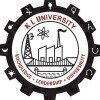
I appeared for an interview before Aug 2020.
Interview Questionnaire
1 Question
- Q1. 1. DBMS basics 2. Algorithms and Data structures
Interview Preparation Tips

I applied via Company Website and was interviewed in Aug 2021. There were 2 interview rounds.

Interview Preparation Tips

I applied via Naukri.com and was interviewed in Jun 2020. There were 3 interview rounds.
Interview Questionnaire
1 Question
- Q1. Mainly from my research work, article and LLM specialization
Interview Preparation Tips

I applied via faculty plus and was interviewed before Aug 2021. There was 1 interview round.
(2 Questions)
- Q1. Board presentation on topic of engineering graphics
- Q2. Basics of engineering mechanics
Interview Preparation Tips

I appeared for an interview before Oct 2021.

(2 Questions)
- Q1. OS questions - Process, states, File management
- Q2. Java Questions - Polymorphism, Inheritance, Exceptional handling
(1 Question)
- Q1. About last organization, why shifting, Skills
Interview Preparation Tips

I applied via Newspaper Ad and was interviewed before Nov 2022. There were 4 interview rounds.

(2 Questions)
- Q1. About personal details, Experience & Expected Salary
- Q2. Publication and funding received information
(5 Questions)
- Q1. In your field of interest
- Q2. Subjects handled and knowledge in that
- Q3. Project funding received
- Ans.
Received project funding from various sources including government grants, private donors, and industry partnerships.
Received funding from government grants for research projects
Secured funding from private donors for community outreach programs
Collaborated with industry partners to fund technology development projects
- Q4. Scopus and WoS publication details
- Q5. Knowledge in the subjects, which we are giving as we are experts
(1 Question)
- Q1. Salary negotiation and tentative date of joining if willing to join
Interview Preparation Tips
- Artificial intelligence
- Data Science
- Cloud Computing
- ML/DL


(2 Questions)
- Q1. Question about research and subject questions
- Q2. Research and revenue generation
Interview Preparation Tips
Please don't trust them . I wasted my precious time because of them and suffered a lot.

Interview Questionnaire
2 Questions
- Q1. I am from a CSE background and have a Ph.D. degree. They asked several technical questions on OS, DBMS, Automata, and one question on ML. The questions are mainly on the fundamental, no complex questions a...
- Q2. What is thrashing? How many keys are in DBMS? What is a foreign key? What is 3NF? What is the function of mid-term-scheduler? and so many, total of 17-18 questions were asked.
- Ans.
Answers to various technical questions related to computer science
Thrashing is a phenomenon in which a computer system spends more time in swapping pages than executing actual instructions
DBMS keys include primary key, foreign key, candidate key, super key, etc.
A foreign key is a field in a table that refers to the primary key of another table
3NF or Third Normal Form is a database normalization technique that ensures t...
Skills evaluated in this interview

(2 Questions)
- Q1. Subjective and Good Experience
- Q2. Technical and Good Experience.
(2 Questions)
- Q1. Current job and experience.
- Ans.
Currently working as a Research Assistant at XYZ University with 3 years of experience in conducting experiments and analyzing data.
Research Assistant at XYZ University
3 years of experience in conducting experiments and analyzing data
- Q2. Salary expectations.
Interview Preparation Tips
Jct College Engineering Technology Interview FAQs
Some of the top questions asked at the Jct College Engineering Technology Senior Assistant Professor interview -
Tell us how to improve this page.
Interview Questions for Popular Designations
- Assistant Professor Interview Questions
- Associate Professor Interview Questions
- Professor Interview Questions
- Senior Research Fellow Interview Questions
- Teaching Assistant Interview Questions
- Assistant Lecturer Interview Questions
- Assistant Professor 1 Interview Questions
- Assistant Professor 2 Interview Questions
- Show more
Overall Interview Experience Rating
based on 2 interview experiences
Difficulty level
Duration
Interview Questions from Similar Companies

|
Assistant Professor
11
salaries
| ₹1.9 L/yr - ₹3.6 L/yr |
|
Lecturer
6
salaries
| ₹1.5 L/yr - ₹1.8 L/yr |
|
Senior Assistant Professor
6
salaries
| ₹4 L/yr - ₹4 L/yr |
|
Associate Professor
3
salaries
| ₹5 L/yr - ₹33.5 L/yr |
|
HR Trainer
3
salaries
| ₹7 L/yr - ₹8 L/yr |
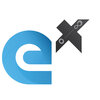
ExcelR

GD Goenka Public School
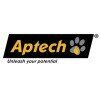
Aptech

Pearson Education India
- Home >
- Interviews >
- Jct College Engineering Technology Interview Questions





